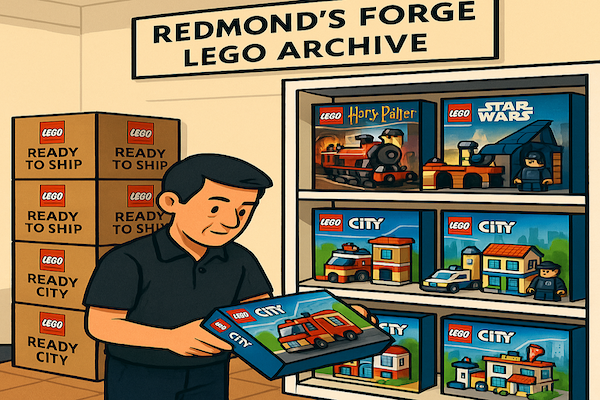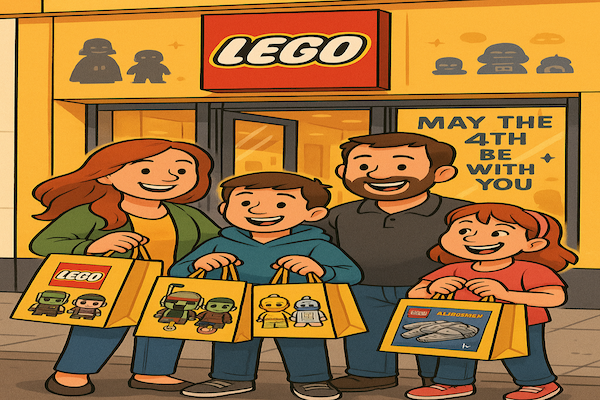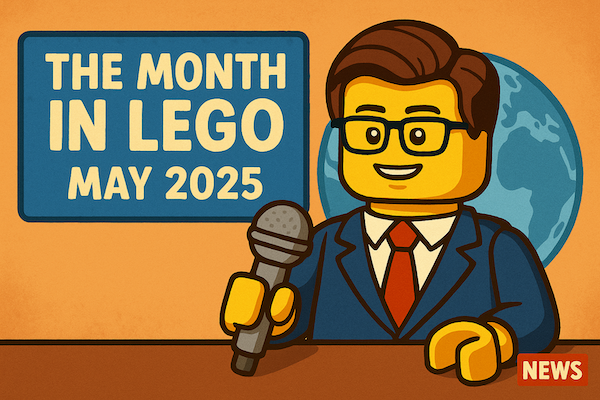
For many LEGO fans, the moment a new set is unboxed is a joyful ritual, a gateway to hours of building and storytelling. But what happens to the box once the build is complete? Should LEGO boxes be kept, tossed, or treasured? At Redmond’s Forge, where LEGO is as much a curated art-form as a hobby, the question is more than academic, it’s part of a growing conversation on collecting, preserving, and displaying our favourite brick-built worlds.
Whether you’re a casual builder, a serious collector, or curating a LEGO Museum like we are, here’s everything you need to know about whether to keep LEGO boxes, how to store them, and the best ways to maintain or even display them.
Why Keep LEGO Boxes?
Let’s start with the obvious question: Should you keep LEGO boxes?
1. Collector Value
For collectors, keeping the original box can significantly enhance the resale value of a set. A complete set that includes the original instructions and box (even flattened) is generally more appealing to buyers. Sealed boxes command the highest prices, but even used sets with boxes tend to sell faster and for more.
2. Nostalgia and Artwork
LEGO box art is often as visually impressive as the set itself. From the vibrant cityscapes of LEGO City to the dramatic vistas of LEGO Star Wars or Harry Potter, these boxes often evoke a strong emotional attachment. Displaying them adds a visual storytelling element to any LEGO collection.
3. Documentation
Boxes often include key information: set number, part count, theme branding, and sometimes even alternate build suggestions. For future inventory or categorisation, a box provides a handy reference.
When It’s Okay to Let Go
That said, not every box needs to be kept is what some people would say. For sets with no resale plans or those that were incomplete or modified significantly, the value of the box is mostly sentimental. In small apartments or growing collections, keeping every box may be impractical. If you don’t want them we at Redmond’s Forge are only too happy to take them off your hands.
Our Rule of Thumb at Redmond’s Forge:
We flatpack and store every box, but we have a warehouse and a mechanism to store these easily. Others will only do it for sets that are part of their display pieces or where long-term rebuild or resale might be on the cards. Other themes that live in permanent displays (like our Harry Potter collection or UCS Star Wars builds) may have their boxes displayed. But we never get rid of a box, or a polybag.
How to Store LEGO Boxes (Without a Dedicated Warehouse)
1. Flatpack with Care
Flattening boxes is one of the most efficient ways to retain them without taking up much space. To flatpack correctly:
- Gently open glued flaps using a butter knife or spudger.
- Avoid tearing; lift the tabs instead.
- Do not crease printed surfaces unnecessarily.
This preserves the structural integrity, making it possible to reassemble the box if needed for resale.
2. Use LEGO “Ready to Ship” Boxes
At Redmond’s Forge, we store our flattened boxes inside LEGO’s own Ready to Ship cartons. These boxes are sturdy, stackable, and appropriately sized for the task. They also bring consistency to the archive system and protect against dust and light.
Each Ready to Ship box can be labeled by theme or set number range for quick retrieval.
3. Climate Control
Boxes, like instruction manuals, are vulnerable to humidity, temperature swings, and direct sunlight. Store them in:
- A dry, ventilated space
- Away from windows or heaters
- Using desiccant packs to reduce moisture buildup
Displaying LEGO Boxes in a Museum or Showcase
As we plan our LEGO Museum at Redmond’s Forge, we’re considering a hybrid model: some boxes displayed behind the builds they belong to, forming a thematic backdrop. This allows for:
- Visual continuity between the set and its original artwork
- A layered narrative experience for visitors
- Use of vertical wall space behind display shelves
Display Tips:
- Use IKEA-style display shelving (e.g. BILLY or BESTÅ) with adjustable depths to accommodate both box and build.
- Mount transparent clips or clear bookends to hold boxes upright without damaging them.
- Ensure even lighting, avoiding UV-heavy bulbs that may fade artwork.
For sets with towering box art (like LEGO Icons or Creator Expert), position the box upright on a shelf just above or behind the display to enhance the drama of the scene.
Maintaining LEGO Boxes Over Time
If you choose to keep boxes long-term, here’s how to keep them in excellent condition:
1. Avoid Tape or Permanent Markings
Do not tape over box art or apply labels directly. Instead, use post-it notes or index cards placed inside.
2. Dust and Handle with Care
Dust boxes lightly with a microfiber cloth. When handling them, make sure hands are clean or use gloves for rare or high-value sets.
3. Reinforcing Weak Boxes
If a box is torn or structurally weak but you want to keep it:
- Reinforce from the inside using acid-free cardboard
- Use non-yellowing, archival double-sided tape on internal flaps only
Regluing LEGO Boxes for Resale – Is It Acceptable?
This is a grey area, but the consensus among collectors and resellers is:
- Yes, it is okay to reglue boxes if it’s done cleanly and transparently.
- No, if the goal is to deceive the buyer into thinking it’s sealed.
When reglueing:
- Use clear PVA craft glue or a glue stick – avoid superglue or hot glue.
- Apply minimally with a toothpick to the original glue area.
- Let dry under weight to avoid bubbling or warping.
If selling a set with a reglued box, disclose this clearly in the listing – “Box has been carefully re-glued for structural integrity” is both honest and fair.
Final Thoughts: What Story Do Your LEGO Boxes Tell?
At Redmond’s Forge, every LEGO set tells a story, and the box it came in is the cover art for that tale. From the nostalgic impulse to preserve to the practical benefits of resale, there’s no single answer to the box question. But if you’re building a lasting collection, curating a city, or establishing a LEGO Museum, boxes deserve a place in the archive, or on the shelf.
Flat-packed or displayed, pristine or re-glued, the humble LEGO box might just be the most underrated part of your build.

